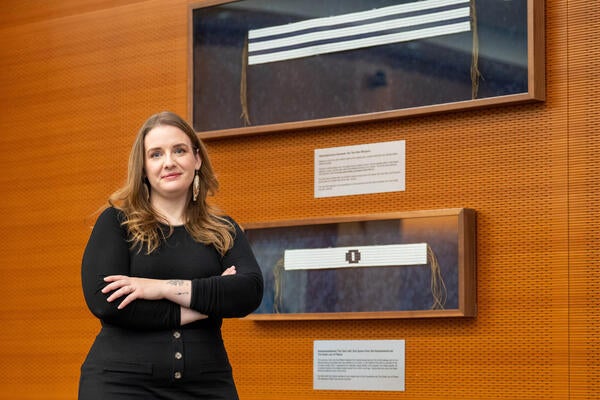
How can parents help protect shy children from anxiety disorders?
A warm, responsive parenting style can safeguard shy children from becoming teens with anxiety disorders, says University of Waterloo researcher

A warm, responsive parenting style can safeguard shy children from becoming teens with anxiety disorders, says University of Waterloo researcher
By Staff Faculty of Arts
Parents of shy babies worry their inhibited children will grow up to be anxious teens and research has shown there is a link between shy children and an increased risk of anxiety problems later in life.
But new research suggests parents can proactively reduce the risk of future anxiety disorders by ensuring they develop a warm and consistently responsive relationship with their shy baby.
“We now understand that infants and young children with an inhibited temperament who also have insecure early attachment relationships are most likely to become socially anxious teens– especially boys,” says Heather Henderson, an associate professor in University of Waterloo’s Department of Psychology and co-author of a recent study, published in the journal Child Development.
“Competent responsive parents, who form a secure attachment relationship with their young children, can be an extremely important protective factor in their child’s development,” adds Henderson.
Along with colleagues at the University of Maryland and the National Institute of Mental Health in the U.S., Henderson followed children from infancy through adolescence and found that a secure attachment between a shy baby and its primary caregiver can actually help prevent teen anxiety problems.
The work is important for mental health because, “anxiety disorders are among the most common psychiatric problems seen in children and adolescents,” says Henderson.
It’s the first long-term study of the combined influence of attachment and behavioural inhibition as predictors of teen anxiety. The study included 165 adolescents aged 14 to 17 from middle-to-upper class European American families who had been periodically assessed throughout early childhood beginning at four months old, and later, as adolescents.
Toddlers’ attachment to parents was measured using the Strange Situation Paradigm which includes a series of separation and reunion episodes with their mothers. The toddler’s behaviour, particularly during reunion episodes, was observed and coded in order to form attachment classifications. Toddlers who quickly approached the parent and were easily soothed and willing to return to exploring the room were classified as secure. In contrast, toddlers who avoided contact, or showed anger and unmoderated distress, or other types of atypical response upon the parent’s return, were classified as insecure.
Behavioural inhibition was repeatedly assessed over early and middle childhood using laboratory observations and reports from mothers. Assessments focus on the toddler and then young child’s reaction to unfamiliar objects, people or situations. If they repeatedly respond with fear or social withdrawal, they are classified as having some degree of behavioural inhibition.
While the researchers found that behavioural inhibition was associated with higher anxiety when toddlers also had insecure attachment relationships - this association was particularly strong for boys in the study. Henderson and her colleagues say further study is needed to understand how a child’s gender influences development of anxiety.
“A clear indication of a secure attachment between young children and their caregivers is sensitive caregiving,” says Henderson. “So what really matters is that the parent responds to the child’s cues – crying, for example - in a consistent way so that there is an easy, predictable, and balanced back-and-forth between the parent and the child.”

Read more
New research from the University of Waterloo centres Haudenosaunee-led efforts in the repatriation and reclamation of cultural and intellectual property

Read more
Researchers awarded funding to investigate ecology, climate change, repatriation, health and well-being through cultural and historical lens

Read more
New Canada Research Chairs will tackle future-focused problems from social robots and intergroup attitudes to geochemistry and nanoscale devices
The University of Waterloo acknowledges that much of our work takes place on the traditional territory of the Neutral, Anishinaabeg, and Haudenosaunee peoples. Our main campus is situated on the Haldimand Tract, the land granted to the Six Nations that includes six miles on each side of the Grand River. Our active work toward reconciliation takes place across our campuses through research, learning, teaching, and community building, and is co-ordinated within the Office of Indigenous Relations.